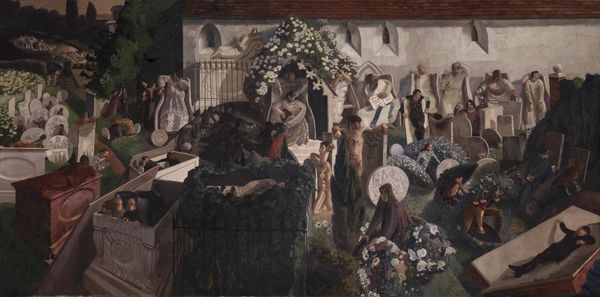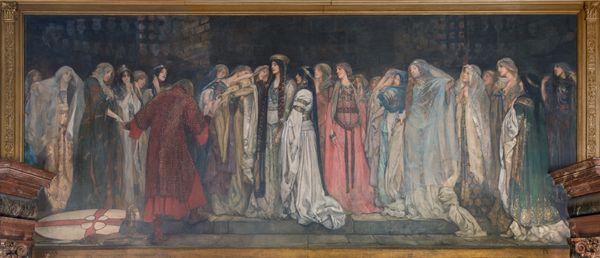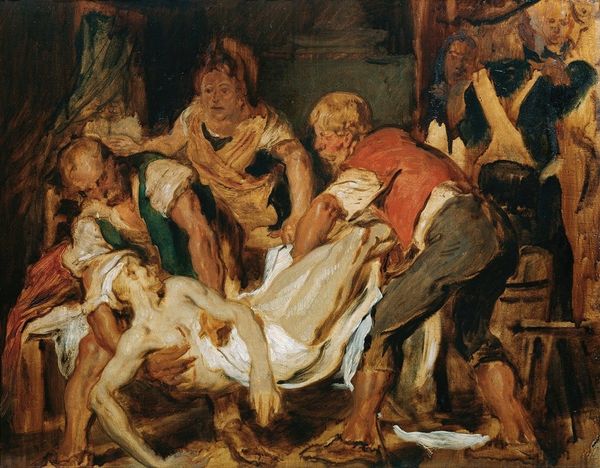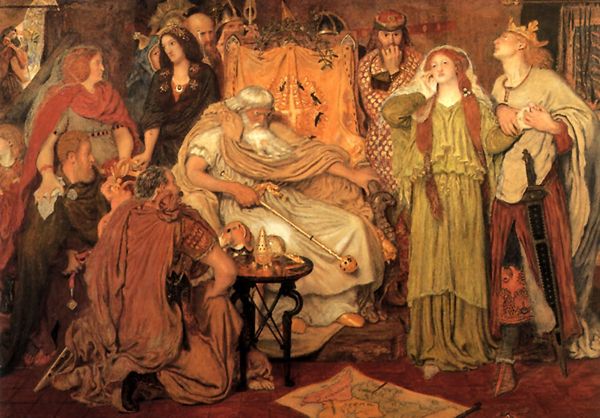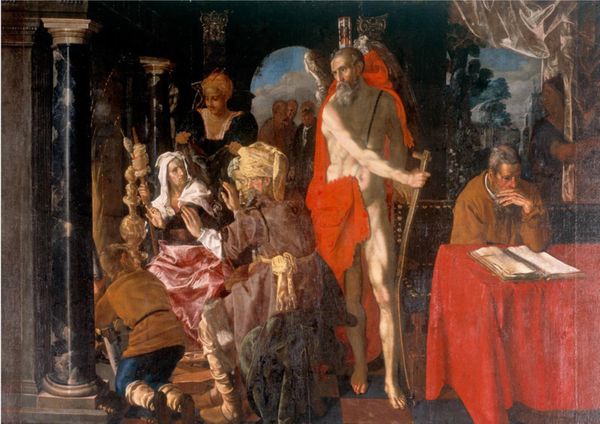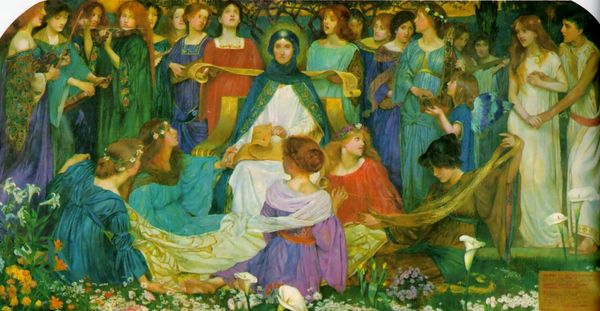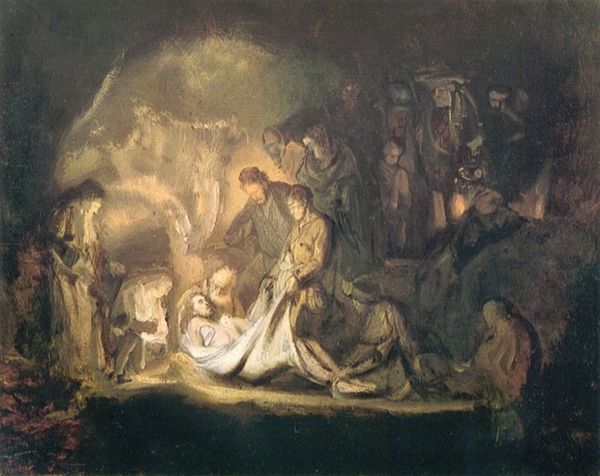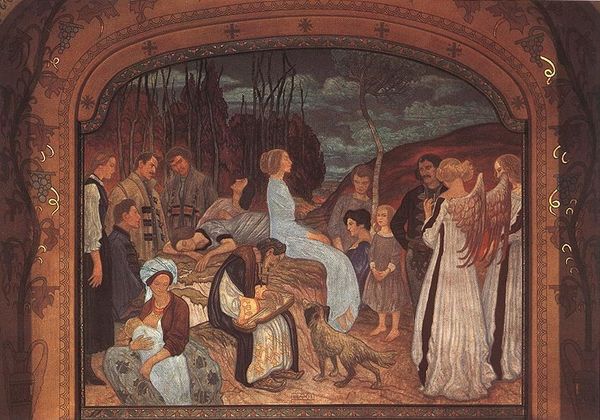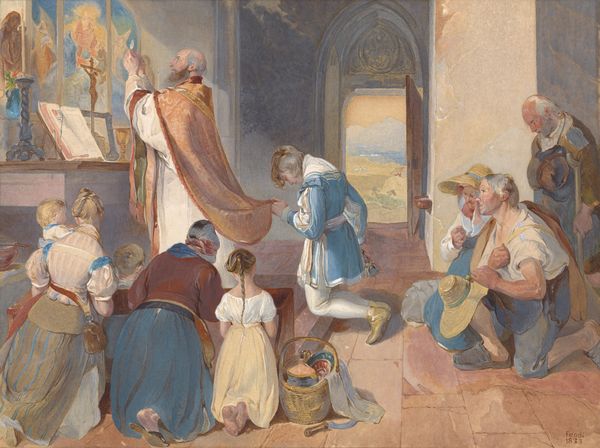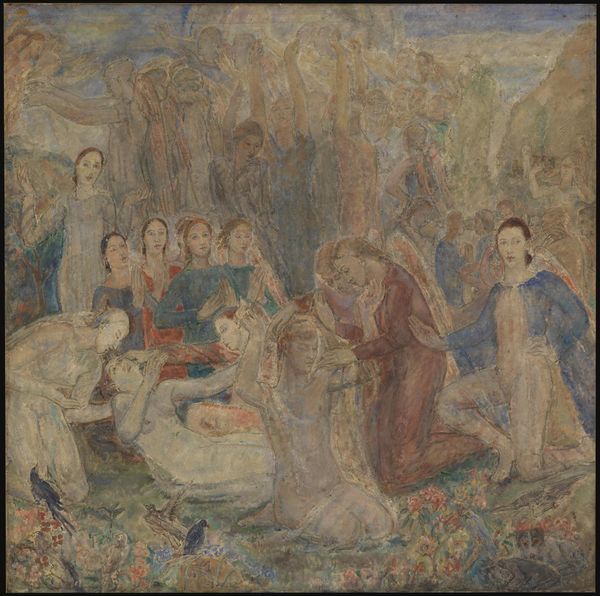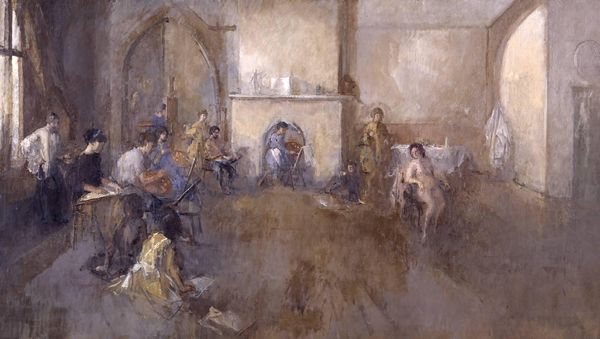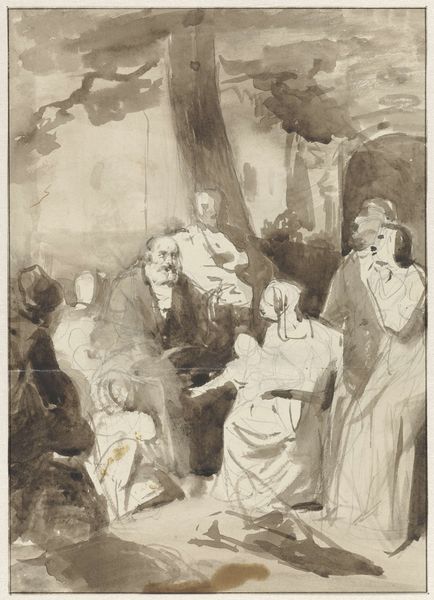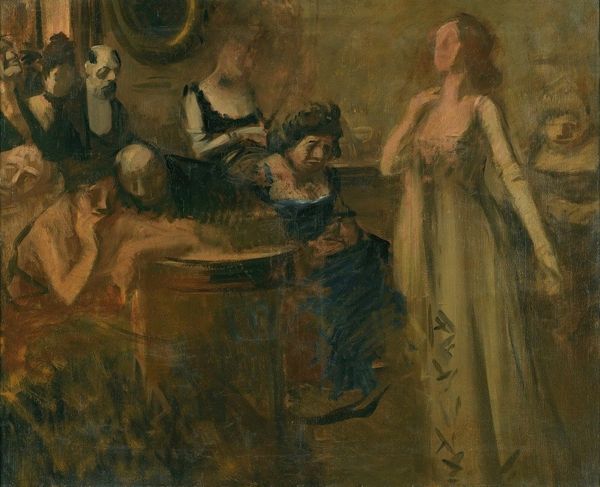
Dimensions: support: 811 x 1303 mm frame: 850 x 1342 x 55 mm
Copyright: © ADAGP, Paris and DACS, London 2014 | CC-BY-NC-ND 4.0 DEED, Photo: Tate
Editor: Boris Taslitzky's 'Study for 'The Death of Danielle Casanova', currently at the Tate, evokes a profound sense of loss. What symbols do you see in this depiction of suffering? Curator: Notice how the figures, drained of color, cluster around the central figure, who is illuminated. This stark contrast symbolizes the loss of vitality, the extinguishing of a light. It recalls traditional Christian iconography, but re-imagined with the stark reality of war. Editor: So, it's like a modern-day Pieta? Curator: Precisely. The repetition of draped figures speaks to shared grief, a collective memory of trauma. Taslitzky is using visual language to connect us to the universal experience of loss under inhumane conditions. This study carries the weight of history. Editor: I see, it’s a powerful reminder of shared human experience through potent symbolism. Thank you.
Comments
tate 8 months ago
⋮
http://www.tate.org.uk/art/artworks/taslitzky-study-for-the-death-of-danielle-casanova-t07917
Join the conversation
Join millions of artists and users on Artera today and experience the ultimate creative platform.
tate 8 months ago
⋮
While the Nazis considered modernist artto be subversive, realism could also be problematic for them. Taslitzky was among those who developed Socialist Realism to promote Communism and attack Fascism. As a member of the French Resistance, he was deported to Buchenwald concentration camp. His horrific experiences underpin this work, which commemorates the death of a leading French Communist at Auschwitz. Taslitzky’s composition concentrates the wider tragedy into the suffering of a single individual, while affirming the resilience of the human spirit. Gallery label, July 2008
